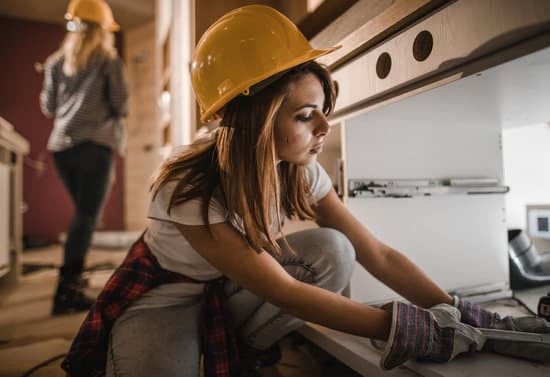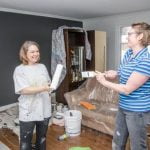During a wildfire, ensuring good air quality in your home is crucial for the health and safety of you and your family. In this article, we will explore various methods on how to improve air quality in the home during a fire. The impact of poor air quality during such disasters can have serious consequences, making it essential to be prepared and informed.
Breathing in smoke and toxins from a fire can pose significant risks to respiratory health, aggravating conditions such as asthma and leading to short-term and long-term health issues. Understanding the importance of clean air during a fire is imperative for safeguarding yourself against the harmful effects of smoke inhalation. By taking proactive measures to maintain good indoor air quality, you can reduce your exposure to pollutants and protect your well-being.
To effectively combat poor air quality during a fire, it is essential to first identify the levels of contamination in your home. Utilizing tools and devices for monitoring air quality can provide valuable insights into the pollution levels indoors, allowing you to take appropriate action. By learning how to distinguish between different air quality levels, you can better equip yourself with the knowledge needed to improve the indoor environment and mitigate health risks associated with fires.
Importance of Clean Air
During a wildfire, the air quality in and around your home can quickly deteriorate due to the smoke and toxins released into the air. Breathing in these harmful pollutants can have serious health consequences, especially for those with respiratory conditions such as asthma or COPD. It is crucial to understand the risks associated with poor air quality during a fire and take proactive measures to protect yourself and your loved ones.
To improve air quality in your home during a fire, it is important to recognize the signs of compromised indoor air. Symptoms such as coughing, shortness of breath, irritation of the eyes, nose, and throat, or exacerbation of existing respiratory conditions may indicate that the air inside your home is contaminated with smoke particles and other pollutants.
By monitoring air quality levels using tools such as portable air quality monitors or carbon monoxide detectors, you can stay informed about the current conditions inside your home and take appropriate actions to reduce exposure to harmful pollutants.
One effective way to minimize the impact of smoke on indoor air quality is through proper ventilation techniques. Opening windows and doors strategically to create cross-ventilation can help remove smoke particles from your home and improve overall indoor air circulation.
Additionally, using exhaust fans in bathrooms or kitchens can help expel contaminated air outdoors. Creating a pathway for clean outdoor air to enter your home while pushing out polluted indoor air is essential for maintaining a healthier living environment during a fire event.
Identifying Air Quality Levels
Air quality monitoring is crucial during a fire to ensure the safety and well-being of you and your family. By understanding the air quality levels in your home, you can take necessary steps to improve the indoor environment and reduce exposure to harmful pollutants. There are several tools and devices available that can help you monitor air quality effectively.
Indoor Air Quality Monitors
One of the most common tools for monitoring air quality in your home is an indoor air quality monitor. These devices measure various pollutants such as particulate matter, volatile organic compounds (VOCs), carbon monoxide, and more. By regularly checking the readings on these monitors, you can track changes in air quality levels and adjust your ventilation or filtration strategies accordingly.
Air Quality Apps
In addition to physical monitors, there are also air quality apps available for smartphones that provide real-time data on local air quality levels. These apps often utilize data from government agencies or environmental organizations to give you up-to-date information on pollution levels in your area. By using these apps, you can stay informed about outdoor air quality as well as indoor conditions during a fire.
Air Quality Test Kits
For a more comprehensive assessment of your indoor air quality, consider using an air quality test kit. These kits typically include sampling materials to collect air samples for analysis in a laboratory.
While they may require more time and effort compared to other monitoring devices, they can provide detailed insights into specific pollutants present in your home environment. This information can be valuable for identifying sources of pollution and determining the best course of action to improve air quality during a fire.
By utilizing these tools and devices for monitoring air quality levels in your home during a fire, you can take proactive steps to protect yourself and your loved ones from the harmful effects of smoke and toxins. Stay informed about the indoor environment by regularly checking readings from indoor air quality monitors, using air quality apps for real-time updates, and considering comprehensive testing with air quality test kits when needed.
Maintaining healthy indoor air is essential for promoting overall well-being amidst wildfires and other environmental hazards.
Effective Ventilation Techniques
During a wildfire, smoke can infiltrate your home and compromise indoor air quality, posing health risks to you and your family. Implementing effective ventilation techniques is crucial in removing smoke particles from your living space and improving air quality.
One of the simplest ways to improve ventilation is by opening windows and doors to allow fresh air to circulate throughout your home. Cross-ventilation, where you open windows on opposite sides of the house, can create a flow of air that helps push smoke out.
Another effective way to remove smoke from your home is by using exhaust fans in bathrooms and kitchens. By turning on these fans, you can help draw out smoke particles and odors from cooking or burning materials. Additionally, using portable air purifiers with HEPA filters can help capture tiny particles like smoke, ash, and soot in the air. Placing these air purifiers in commonly used areas of your home can significantly reduce the levels of harmful pollutants during a wildfire.
It’s also important to avoid activities that can worsen indoor air quality during a fire, such as smoking indoors or burning candles or incense. These actions can release additional pollutants into the air and exacerbate respiratory issues.
By implementing these ventilation techniques and avoiding behaviors that contribute to poor air quality, you can create a safer environment for you and your loved ones during wildfires. Remember, proactive measures are key in protecting your health when faced with compromised indoor air quality due to fires.
Air Filtration Systems
During a fire, the smoke and toxins released into the air can have severe consequences on your health. To improve air quality in your home during such situations, it is crucial to invest in the right air filtration system. With a variety of options available in the market, choosing the most suitable air purifier for smoke can make a significant difference in creating a safer indoor environment.
Understanding HEPA Filters
High-Efficiency Particulate Air (HEPA) filters are one of the most effective types of filters for removing smoke particles from the air. These filters are capable of capturing tiny particles as small as 0.3 microns, including smoke, dust, pollen, and other pollutants. When selecting an air purifier for smoke, look for one that includes a HEPA filter to ensure optimum performance in eliminating harmful contaminants from your home.
Consider Carbon Filters
In addition to HEPA filters, consider air purifiers that also utilize activated carbon filters. Carbon filters are effective at neutralizing odors and trapping volatile organic compounds (VOCs) present in smoke. By combining both HEPA and carbon filters in your air purification system, you can effectively remove smoke particles while reducing any lingering smells associated with fires. Be sure to check the specifications of each air purifier to determine if they include both types of filters for comprehensive air cleaning.
Size and Coverage Area
When choosing an air purifier for smoke, consider the size of the room or area you need to cover. Different models come with varying coverage areas, so it is essential to select a unit that can effectively clean the air in the space where you spend most of your time during a fire incident.
Additionally, pay attention to the Clean Air Delivery Rate (CADR) of the air purifier, which indicates how quickly it can filter out pollutants from a specific room size. By selecting an appropriately sized unit with sufficient coverage, you can optimize clean indoor air quality during wildfire events.
DIY Air Quality Improvement
When faced with poor air quality during a fire, it is essential to explore natural ways to cleanse the air in your home. While technology such as air purifiers and ventilation systems can be effective, there are also simple DIY methods that can help improve indoor air quality.
One of the most basic yet impactful ways to do this is by increasing ventilation throughout your home. Opening windows and doors allows for fresh air to come in and helps push out smoke and pollutants lingering indoors.
In addition to ventilation, certain houseplants can act as natural air purifiers, filtering out harmful toxins and improving overall air quality. Plants like aloe vera, spider plants, and peace lilies are known for their ability to remove pollutants from the air through a process called phytoremediation. Placing these plants strategically around your home can not only enhance the aesthetic but also boost the cleanliness of the air you breathe.
Another DIY method to consider is using natural odor absorbers like baking soda or activated charcoal. These substances have properties that can help trap odors and impurities in the air, reducing the impact of smoke and other pollutants. Simply placing open containers of baking soda in different rooms or strategically positioning activated charcoal bags can make a noticeable difference in indoor air quality during a fire.
| DIY Air Quality Improvement Tips | Benefits |
|---|---|
| Increase ventilation by opening windows and doors | Allows fresh air to circulate and push out pollutants |
| Use houseplants like aloe vera or peace lilies | Naturally filters toxins from the air through phytoremediation |
Creating a Safe Room
During a fire, creating a safe room in your home can be crucial for maintaining good air quality and minimizing exposure to harmful smoke and toxins. By designating a specific area as a clean air space, you can ensure that you have a safe refuge during periods of poor air quality. Here are some tips on how to create a safe room in your home:
- Choose an Interior Room: Select an interior room with the least amount of windows and doors to minimize the entry of smoke and outside air pollutants.
- Seal Gaps and Cracks: Use weather stripping or caulk to seal any gaps around windows, doors, and vents to prevent smoke from seeping into the room.
- Create Ventilation Options: Install a fan or portable HEPA air purifier with a carbon filter in the safe room to help circulate and clean the air.
In addition to setting up a safe room, it’s important to stock it with essential supplies such as water, non-perishable food, medications, flashlights, and batteries. Having these items readily available can help you stay comfortable and safe during periods of poor air quality caused by wildfires.
- Stay Informed: Monitor local air quality reports provided by environmental agencies or weather services to stay updated on the current conditions in your area.
- Create an Evacuation Plan: Develop an evacuation plan for yourself and your family in case air quality deteriorates rapidly or if there is an immediate threat from a wildfire.
- Practice Fire Safety Measures: Take preventive measures such as clearing debris from around your home, keeping flammable materials away from structures, and following local fire restrictions to reduce the risk of fires near your property.
By implementing these tips for creating a safe room in your home during fires, you can better protect yourself and your loved ones from the dangers of poor air quality. Remember that preparation is key when it comes to promoting health and safety amidst wildfires.
Emergency Preparedness
During a wildfire, it is crucial to have an air quality action plan in place to protect your health and well-being. Developing an emergency preparedness strategy can significantly improve the air quality in your home during a fire and minimize the risks associated with inhaling smoke and toxins.
One of the first steps in creating an effective plan is to stay informed about the air quality levels in your area by utilizing tools such as air quality monitors or apps that provide real-time updates on pollution levels.
In addition to staying informed, it is essential to have a designated safe room within your home where you can seek refuge during a fire. This room should be properly sealed off from outdoor air and equipped with an air purifier or filtration system to remove harmful particles from the indoor environment. By creating a safe space with clean air, you can reduce your exposure to smoke and other pollutants, improving your overall indoor air quality during a wildfire.
Furthermore, having an evacuation plan in place is crucial for ensuring your safety during a fire emergency. Identify multiple escape routes from your home and establish a meeting point for family members in case of separation. Practice fire drills regularly so that everyone knows what to do in the event of an emergency. By being prepared and proactive, you can better protect yourself and your loved ones from the harmful effects of poor air quality during a wildfire.
| Benefits of Emergency Preparedness | How It Improves Air Quality During Fire |
|---|---|
| Staying informed about pollution levels | Minimizing exposure to smoke and toxins |
| Creating a safe room with proper filtration | Reducing harmful particles indoors |
| Establishing evacuation routes | Promoting safety for family members |
Conclusion
In conclusion, it is essential to prioritize the promotion of health and safety in your home amidst wildfires by taking proactive measures to improve air quality. The impact of poor air quality during a fire cannot be underestimated, as breathing in smoke and toxins can have serious health implications. By understanding the risks associated with contaminated air and implementing effective strategies, you can create a safer environment for yourself and your loved ones.
One of the key ways to improve air quality in your home during a fire is by utilizing proper ventilation techniques to remove smoke. This may include opening windows and using fans to facilitate airflow, allowing harmful pollutants to be expelled from your living space. Additionally, investing in air filtration systems such as air purifiers specifically designed to combat smoke particles can greatly enhance the quality of the air you breathe indoors.
Furthermore, creating a designated safe room within your home where clean air can circulate freely is crucial in times of wildfires. By following DIY methods to cleanse the air naturally and developing an emergency preparedness plan tailored to improving indoor air quality during fires, you can better safeguard your wellbeing. Remember that promoting health and safety starts with taking proactive steps towards maintaining clean air within your living environment even amidst challenging circumstances like wildfires.
Frequently Asked Questions
How Do You Purify Air From Fire Smoke?
Purifying air from fire smoke requires a multi-faceted approach. One way is to use an air purifier with a HEPA filter to remove smoke particles from the air. Opening windows to allow fresh air in can also help dissipate smoke indoors.
What to Do When Air Quality Is Bad From Smoke?
When the air quality is bad from smoke, it is important to limit outdoor activities, especially for sensitive groups like children, elderly, and those with respiratory conditions. Keeping windows and doors closed can prevent smoke from entering your home.
What Is the Fastest Way to Improve Air Quality in a Home?
The fastest way to improve air quality in a home is by using an air purifier with a HEPA filter. Additionally, ensuring proper ventilation in the home by opening windows when outdoor air quality is better can also help improve indoor air quality quickly. Regular cleaning and dusting can also reduce indoor pollutants.

I’m thrilled to have you here as a part of the Remodeling Top community. This is where my journey as an architect and remodeling enthusiast intersects with your passion for transforming houses into dream homes.





